Tales of Innocence | Masks of Evil | Treasure of the Peacock's Eye
Young Indy Home
Chapter Overview
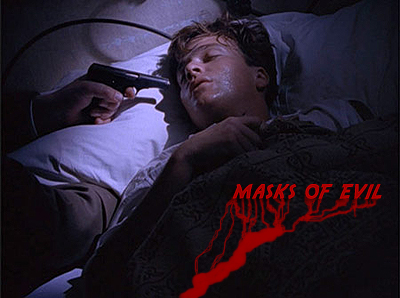
Indy once again finds himself on a top-secret mission to broker peace. This time Indy heads into Istanbul where he poses as a Swedish journalist to make connections with future revolutionary leader Mustafa Kemal (Atatürk). Danger surrounds this tale of espionage as everyone who touches Indy’s letter of peace seems to mysteriously die. After Istanbul, Indy heads into Transylvania where the inexplicable General Targo is raiding POW camps and senselessly killing allied prisoners. Indy investigates and quickly suspects that the General's lust for stakes may not be the only thing he has in common with the infamous Vlad the Impaler. Blood, obscurity, and not quite dead soldiers surround this dark and scary tale of the immortal Dracula.
Key Topics: | The Ottoman Empire; The Atatürk Revolution; Dracula |
Historic People: | Atatürk—Influential revolutionary who led to an independent Turkey |
People and Topics
DescriptorSuccessful Ottoman military commander during WWI, Mustafa Kemel Atatürk used his fame from the war to gain political ground. Unhappy with the subsequent colonization of old Ottoman territories following the war, Kemel led his people in a revolution (called the Turkish National Movement) and succeeded in forming the Republic of Turkey. BooksMango, Andrew. Ataturk: The Biography of the Founder of Modern Turkey. Woodstock: The Overlook Press, 1999. Ahmad, Feroz. Turkey: The Quest for Identity. Oxford: Oneworld Publications, 2003. Websites |
DescriptorTurkish writer who chronicled the fall of the Ottoman Empire, revolution, & Imperialism of Turkey after WWI. BooksAdak, Hulya. "An Epic for Peace." Memoirs of Halide Edib. Piscataway: Gorgias Press, 2004. Erol, Sibel. "Introduction." House with Wisteria: Memoirs of Halide Edib. Charlottesville: Leopolis Press, 2003. Websites |
DescriptorFormed in 1300 by Osman I, the Ottoman Empire spanned three continents at the peak of its power and connected the Western world to the East. By the mid-1800's the Empire was falling victim to a growing sense of Nationalism and many of its provinces were revolting for independence. In 1914, the Ottomans joined in an alliance with Germany and fell into WWI. The allied victory in the Fall of 1918 sealed the fate of the dying empire and the Middle East was reforged into the chaotic and unbalanced area we know to this day. BooksFinkel, Caroline. The History of the Ottoman Empire: Osman's Dream, The Story of the Ottoman Empire 1300-1923. United Kingdom: Basic Books, 2005. Goffman, Daniel. The Ottoman Empire and Early Modern Europe. Cambridge, UK: Cambridge University Press, 2002. Websites |
DescriptorKnown traditionally as Vlad the Impaler, his blood lust led to the myth and legend of Dracula. Vlad Dracul III served as a Romanian prince under Ottoman rule in the late 1400's. The history of Vlad is often mixed with legend and fact. Many accounts report Prince Dracul as a just lawmaker, while other accounts speak of terrible brutality. It is true, however, that Vlad's favorite form of torture was impaling his victims with stakes. Death often came within a few hours, but for some victims it took days to succumb. BooksNeedle, Jan, ed. Bram Stoker's Dracula. Illus. Gary Blythe. Cambridge, MA: Candlewick Press, 2004. Trow, M.J. Vlad the Impaler: In Search of the Real Dracula. United Kingdom: Sutton Publishing Ltd., 2003. WebsitesBetween Hero & Vampire- Dracula |
Disclaimer: All resources (including books and websites) provided on indyintheclassroom.com are intended to be used by educators. Indyintheclassroom.com is not responsible for the content on linked websites.
Copyright: All images on Indyintheclassroom.com are used with permission or are in the public domain. Exceptions are noted. For additional information see our Copyright section. |
Documentary Previews
Below you will find information about each documentary that supplements Masks of Evil.
For the People, Despite the People: The Atatürk Revolution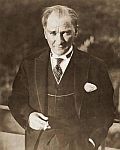 | At the end of World War I, the Ottoman Empire paid the ultimate price for choosing the wrong side. The winners, Britain and France, marched in and began to carve it up. Then an army arose out of nowhere, expelled the invaders from its homeland, and proclaimed the Republic of Turkey. All because of one man, Mustafa Kemal, or, as he came to be known, Atatürk -- father of the Turks. Enormously ambitious for himself and his people, Atatürk saw independence as just the beginning. He would not only transform the government, but also how people dressed, worshipped, wrote, and named themselves -- individually and as a nation. Produced and Written by Sharon Wood. Running Time: (0:30:24) |
The Greedy Heart of Halide Edib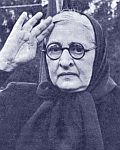 | In novels, memoirs, and essays, the Turkish writer Halide Edib chronicled the most cataclysmic change in the history of her country: its creation after World War I from the ashes of the Ottoman Empire. She not only wrote about it, she was one of the creators. And in that process, she helped secure a prominent place in public life for Turkish women. But in 1919, her country was about to become a colony. British and Greek invaders patrolled key cities, and wanted more. In occupied Istanbul, Halide Edib put down her pen, sent her two young sons away to safety abroad, and headed to the hills to join a small rebel band fighting for freedom. For Halide Edib, the choice was clear: she had to go. But she also kept a record of events -- memoirs -- for the youth on both sides fighting and dying around her, and for her own sons, far away. Produced and Written by Sharon Wood. Running Time: (0:27:43) |
The Ottoman Empire: A World of Difference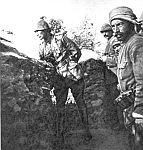 | The Ottoman Empire lasted some 600 years, and spanned three continents. It was not only their military campaigns that made the Ottomans a force to be reckoned with for centuries. In an era when neighboring states persecuted, exiled, or massacred their minorities, the Islamic Ottoman state was willing to tolerate difference. Its subjects included not only Muslims, but large numbers of Christians and Jews. As Ottoman power eventually ebbed, the diversity that been a strength in one era became a weakness in another. Changing political forces within and without the Empire created a toxic stew of ethnic and religious hatred. That hatred would finally boil over amid the carnage of World War I, and contribute to the Ottoman Empire's own death rattle. Produced and Written by Sharon Wood. Running Time: (0:33:05) |
Dracula: Fact and Fiction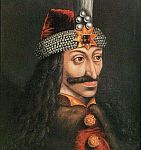 | Few figures are so well known and strike as much terror as that of the vampire known as "Dracula." This creature -- not yet dead, but no longer alive -- has at one time or another tempted, fascinated and repelled us all. When writer Bram Stoker published Dracula in 1897, he couldn't have predicted that he was creating a figure who was larger than death. Today, he might be timeless, but in the 15th century, he was all too real. His name was Prince Vlad Dracula whom history has come to know as Vlad the Impaler. In many ways, the reality of Dracula's life was more terrifying than the fiction he helped inspire, his story more shocking than anything Hollywood could manufacture. Produced and Written by Adam Sternberg. Running Time: (0:24:53) |
Disclaimer: All resources (including books and websites) provided on indyintheclassroom.com are intended to be used by educators. Indyintheclassroom.com is not responsible for the content on linked websites.
Copyright: All images on Indyintheclassroom.com are used with permission or are in the public domain. Exceptions are noted. For additional information see our Copyright section. |
Indy Connections: Masks of Evil
Below are current event articles that relate to events, topics, and people found in Masks of Evil.
Sunken Wrecks Of Epic WWI Naval Battle Revealed
news.sky.com
6/16/2015
They show the battered wrecks of several of the 25 warships - 14 of them British - that were blown up during the Battle of Jutland on 31 May, 1916. Among them is HMS Invincible which was torn apart by a German shell, killing more than 1,000 sailors. HMS Defence and HMS Queen Mary were also scanned during the survey.
First World War centenary: how the events of August 2 1914 unfolded
telegraph.co.uk
8/2/2014
Britain went to war on August 4 1914. In the second part of a four-day series, we document the dramatic events leading up to the declaration of war as they happened, hour-by-hour.
Help Transcribe Diaries From World War I
Smithsonian.com
3/18/2014
The National Archives currently has in its collection 1.5 million pages of handwritten diaries kept by soldiers of World War I. They're some of the most requested documents in the National Archives reading room, but until now have been accessible only to anyone who's made the trip to D.C. But now the archivisits are working to put them online, and you can help them. The project is called Operation War Diary, and it comes from a partnership between the National Archives, the citizen science initiative Zooniverse and the Imperial War Museum in the UK. The diaries have all been scanned and posted online for citizen historians to look at and transcribe. According to the project: "The war diaries contain a wealth of information of far greater interest than the army could ever have predicted. They provide unrivalled insight into daily events on the front line, and are full of fascinating detail about the decisions that were made and the activities that resulted from them."
World War One: 10 interpretations of who started WW1
bbc.com
2/11/2014
No one nation deserves all responsibility for the outbreak of war, but Germany seems to me to deserve most. It alone had power to halt the descent to disaster at any time in July 1914 by withdrawing its "blank cheque" which offered support to Austria for its invasion of Serbia. I'm afraid I am unconvinced by the argument that Serbia was a rogue state which deserved its nemesis at Austria's hands. And I do not believe Russia wanted a European war in 1914 - its leaders knew that it would have been in a far stronger position to fight two years later, having completed its rearmament programme.
Archaeologists Suspect Vampire Burial; An Undead Primer
Nationalgeographic.com
7/15/2013
When archaeologists opened an ancient grave at a highway construction site near Gliwice, Poland, they came across a scene from a horror movie: a suspected vampire burial. Interred in the ground were skeletal remains of humans whose severed heads rested upon their legs—an ancient Slavic burial practice for disposing of suspected vampires, in hopes that decapitated individuals wouldn't be able to rise from their tombs. But the recent Polish discovery isn't the first time that archaeologists have stumbled upon graves of those thought to be undead. Here's what science has to tell us about a few of history's famous revenant suspects.
Meet the Real-Life Vampires of New England and Abroad
Smithsonian.com
9/15/2012
A little more than a century ago, vampires stalked Rhode Island. Or rather, New England farm families were digging up dead relatives suspected of being vampires and desecrating the bodies in a misguided effort to protect the living. Often these latter-day vampire hunters removed and burned their loved ones’ hearts.
Toothless "Vampire" Skeleton Unearthed in Bulgaria
Nationalgeographic.com
7/24/2012
The discovery of a 700-year-old skeleton in Bulgaria—seen at the country's National Museum of History in June—offers evidence that the fear of vampires is far older than Bram Stoker's Dracula. The "vampire" was found entombed among church ruins in the Black Sea town of Sozopol (map) earlier in the month. The skeleton had been stabbed in the chest with an iron rod (upper right), which was in the tomb next to the body.
The Ottoman Empire's Life-or-Death Race
Smithsonian.com
3/22/2012
The executioners of the Ottoman Empire were never noted for their mercy; just ask the teenage Sultan Osman II, who in May 1622 suffered an excruciating death by "compression of the testicles" as contemporary chronicles put it at the hands of an assassin known as Pehlivan the Oil Wrestler. There was reason for this ruthlessness, however; for much of its history (the most successful bit, in fact), the Ottoman dynasty flourished - ruling over modern Turkey, the Balkans and most of North Africa and the Middle East thanks in part to the staggering violence it meted out to the highest and mightiest members of society.
History of Vampires
Discovery.com
10/30/2009
Vampires have been part of cultures for centuries. Find out how this paranormal being maintains its legacy.
Dig unearths female 'vampire' in Venice
MSNBC.com
3/13/2009
ROME - An archaeological dig near Venice has unearthed the 16th-century remains of a woman with a brick stuck between her jaws evidence, experts say, that she was believed to be a vampire.
Disclaimer: All resources (including books and websites) provided on indyintheclassroom.com are intended to be used by educators. Indyintheclassroom.com is not responsible for the content on linked websites.
Copyright: All images on Indyintheclassroom.com are used with permission or are in the public domain. Exceptions are noted. For additional information see our Copyright section. |
Tales of Innocence | Masks of Evil | Treasure of the Peacock's Eye
Young Indy Home



